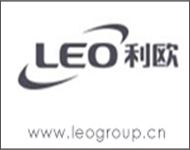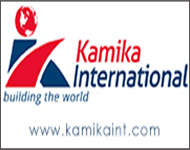- Groundbreaking Ceremony Marks Start of Sh50 Billion MTRH Construction Project
- TANROADS-World Bank Alliance Powers Massive Road and Airport Upgrades Across Tanzania
- Kenya Breaks Ground on Sh5 Billion China-Kenya International Commerce Center in Nairobi
- Construction Begins on $2.15 Billion Uvinza–Musongati Railway Project
- Kenya Secures Chinese Funding for Sh5 Billion Nithi Bridge Reconstruction
- Construction Nears for ELCT Facility Backed by Samia’s 250 Million Boost
- KeNHA Kicks Off Construction of Major Kenya-South Sudan Road Project with AfDB Support
- Tanzania Government Allocates 100 Billion Shillings for Bridge Constructions in Lindi
- $46 Million Deal Signed for Crucial Isiolo-Mandera Road Construction Project
- Tanzania Government Set to Sign Agreement for Dodoma Stadium Construction
Rwanda, Kenya, Uganda to Build Super-Highway
Kenya, Uganda and Rwanda are considering building a superhighway from Mombasa to Kigali, parallel to the planned railway.
According to regional trade lobby organization Trademark East Africa, which will be facilitating the project, it is expected to have a six-lane road, with construction beginning in 2016.
Inspired by the N1 highway that runs from Cape Town in South Africa to Harare in Zimbabwe, the proposed road is intended to ease the movement of cargo, thereby reducing the cost of doing business and increasing intra-regional trade.
Expenditure on transport in the EAC countries accounts for 45% of the total cost of goods. This is 30% higher than in Southern Africa, making commodities produced in the region uncompetitive.
John Byabagambi, Uganda’s Junior Minister for Works who is chairing the Standard Gauge Railway Committee, said that Trademark was doing feasibility studies for a dual carriage highway that forms part of plans to expand the Northern Corridor, as the current single carriage system is too narrow and fraught with inefficiencies.
Allen Asiimwe of Trademark East Africa said the superhighway would have no weighbridges or roadblocks.
This means that once the goods are loaded onto a truck at the Port of Mombasa, there will be no stops until the final destination. Weighbridges and roadblocks are among major hindrances to trade in the region.
As the cost of doing business in the region drops, intra-EAC trade, which currently stands at over $3.8 million, or just 13% of the total trade volumes in the region, is expected to increase.
Asiimwe added that the road, the ability of the revenue authorities of Rwanda, Uganda and Kenya to acquire the latest software known as Automated Systems for Customs Data (Asycuda), plus a $50 million investment in the port of Mombasa, will ensure that cargo moves fast and that it is constantly monitored.
“Investment in a regional asset like the Mombasa port will reduce the time for clearing goods from 18 to five days,” she said.
The software enables Customs officials from the three countries to use the electronic tracking system to monitor the trucks.
The software will also boost the EAC Customs Union since revenue authorities will be able to assess and collect taxes at the first point of entry. This means that once a trader has paid his taxes for goods bound for Uganda, there will be no need to pay a refundable bond to Kenya. This has been the practice, due to the fear that goods could be dumped in Kenya.
As the cost of doing business in the region drops, intra-EAC trade, which currently stands at over $3.8 million, or just 13% of the total trade volumes in the region, is expected to increase.
Experts warn that intra-EAC trade is well below the standards of any functional common market.
“Intra-regional trade should account for at least 25% of the total trade volumes in any functional common market,” said Rashid Kibowa, Commissioner for Economic Affairs in Uganda’s Ministry of East African Community Affairs.
In the European Union, intra-regional trade accounts for 55% of total trade while it stands at 40% in the US.
Source : abdas.org
Posted on : 30 Nov,-0001
Buildmart is Africa's leading directory and market news website for the building and construction industry | Kenya | Tanzania | Rwanda | Ethiopia
Exhibitions In Africa
- 27th Buildexpo Kenya 2026
KICC, Nairobi, kenya
08 - 10, July 2026 - 11th Afriwood Kenya 2026
KICC, Nairobi, kenya
08 - 10, July 2026 - 11th LightExpo Kenya 2026
KICC, Nairobi, kenya
08 - 10, July 2026 - 10th Minexpo Africa 2026
KICC, Nairobi, Kenya
08 - 10, July 2026 - 27th Buildexpo Tanzania 2026
Diamond Jubilee Expo Center, Dar-es-Salaam, Tanzania
23 - 25, Sep 2026 - 10th Afriwood Tanzania 2026
Diamond Jubilee Expo Center, Dar-es-Salaam, Tanzania
23 - 25, Sep 2026 - 10th LightExpo Tanzania 2026
Diamond Jubilee Expo Center, Dar-es-Salaam, Tanzania
23 - 25, Sep 2026 - 10th Minexpo Tanzania 2026
Diamond Jubilee Expo Center, Dar-es-Salaam, Tanzania
28 - 30, Oct 2026





















